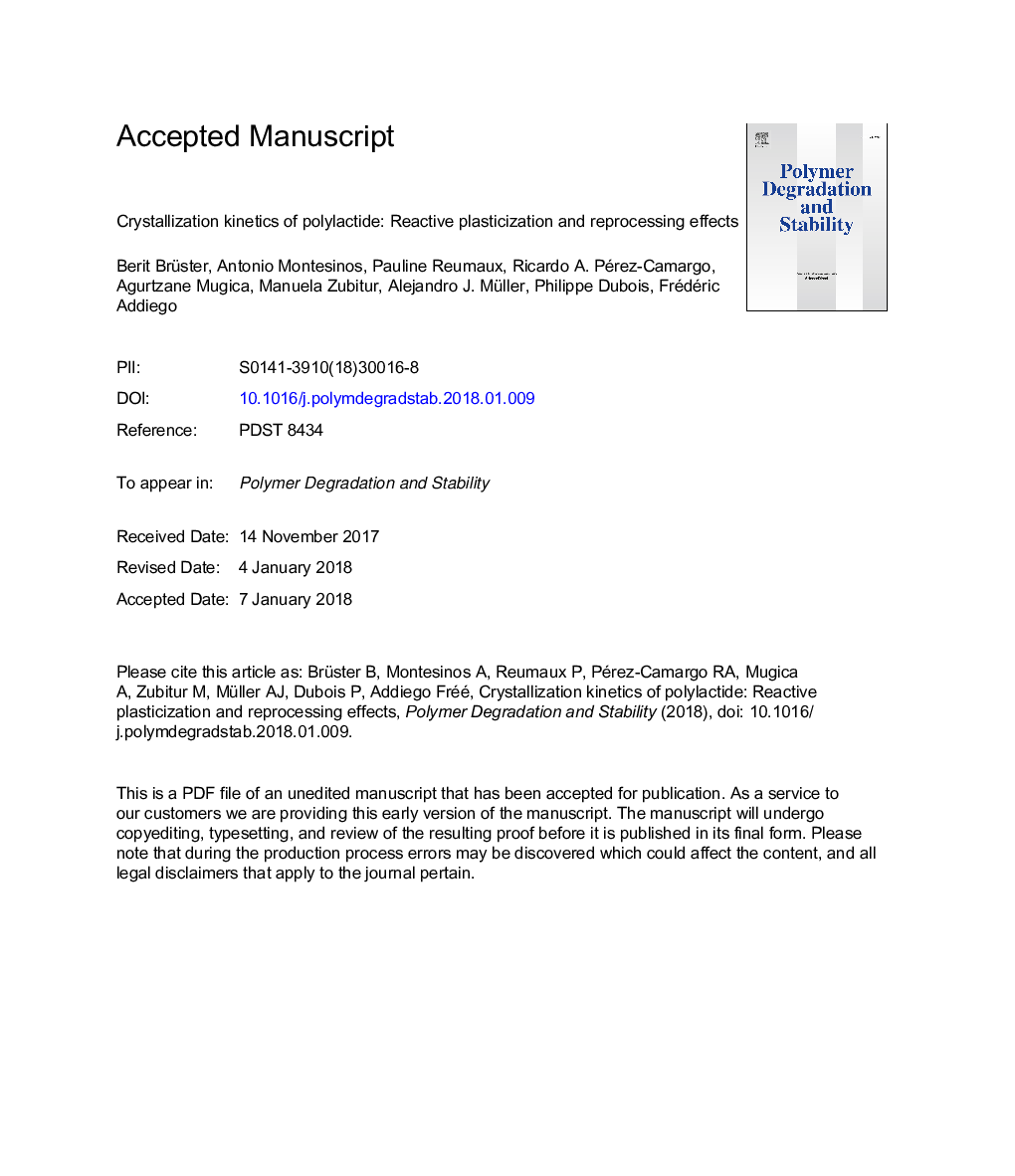| Article ID | Journal | Published Year | Pages | File Type |
|---|---|---|---|---|
| 7824164 | Polymer Degradation and Stability | 2018 | 33 Pages |
Abstract
This work focused on the determination of crystallization kinetics of neat polylactide (PLA) and a plasticized grade of PLA obtained by reactive extrusion (pPLA), as a function of thermomechanical recycling. In particular, the materials were submitted to repeated extrusion and injection procedures to simulate recycling. Prior reprocessing, spherulitic growth rate determined by polarized light optical microscopy indicated that pPLA crystallized into much smaller spherulites as compared to PLA. This finding was explained by a lower nucleation energy barrier promoted by the plasticization of pPLA. Isothermal overall crystallization kinetics were determined by differential scanning calorimetry measurements. It was found that pPLA crystallized much faster than neat PLA due to the plasticization effect. With increasing the number of processing cycles up to 5, PLA crystallization rate gradually increased, while at the same time that of pPLA remained constant. This result was explained by more important degradation mechanisms in PLA as compared to pPLA that enhanced chain mobility, as shown by molecular weight measurements. Moreover, pPLA had a very high initial chain mobility that is maintained regardless of the number of processing cycles. However, the final crystallinity degree was lower in reprocessed pPLAs, as grafting and cross-linking reactions produced during reactive extrusion interrupt crystallizable linear crystallizable sequences and reduced the amount of crystals formed.
Related Topics
Physical Sciences and Engineering
Chemistry
Organic Chemistry
Authors
Berit Brüster, Antonio Montesinos, Pauline Reumaux, Ricardo A. Pérez-Camargo, Agurtzane Mugica, Manuela Zubitur, Alejandro J. Müller, Philippe Dubois, Frédéric Addiego,
